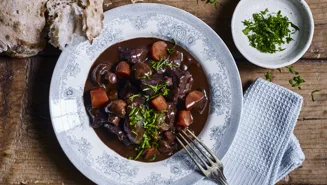
Baking is a wonderful way to spread joy, share incredible flavours, and create lasting memories around a shared love for making and eating great-tasting baked goods.
By using dairy ingredients without lactose, you can create a wide variety of baked goods that are just as delightful and satisfying as their regular counterparts – just without the lactose.
Can you use lactose-free butter in baking?
Yes, you can. It is entirely possible to use lactose-free butter for baking to create a wide array of delightful baked goods. Whether you are craving freshly baked bread, delectable pies, decadent cakes, or another delicious treat, lactose-free butter can easily take a spot on the ingredients list.
It is a versatile ingredient that can be used in a wide range of recipes. The creamy texture and rich flavour are reminiscent of those of regular butter, so it offers the same possibilities and results.
Whether you are creaming it with sugar for a cake batter, incorporating it into flaky pastry dough, or using it for a luscious buttercream frosting, lactose-free butter can deliver excellent results in baked goods.
One of lactose-free butters great advantages is its ability to add the same wonderful flavours and textures without the presence of lactose. It allows you to achieve the same level of richness, tenderness, and mouth-watering flavours.

How to bake with lactose-free butter
Making lactose-free baked goods encourages creativity and innovation in the kitchen. It allows you to explore different ingredients, experiment with new recipes, and discover unique flavour combinations.
When you want to bake with lactose-free butter, you can use it as a substitute for the regular kind in most recipes without significant differences. It has a similar fat content and flavour profile, so you can typically use it as a 1:1 replacement.
Does lactose-free butter affect baking?
It is difficult to pinpoint any significant difference when using lactose-free butter instead of regular butter in baking. It can vary based on the brand and the specific recipe. However, the lactose-free variety maintains a similar fat content and flavour profile, making it an excellent substitute.
Some might find lactose-free butter slightly sweeter because the lactose is broken down into glucose and galactose, which can taste sweeter than lactose. However, this difference in sweetness is subtle and might not be noticeable to everyone, especially in salted butter types. You can always taste a small piece before using it in recipes to see if you need to adjust some of the other sweet ingredients in the recipe.
It is always worthwhile to experiment, especially with more delicate recipes and where the flavour of butter is prominent. Even a slight variance in sweetness could be detected and may alter the overall flavour in such recipes.

How is lactose-free butter for baking made?
To make lactose-free butter, regular cream is replaced with a lactose-free variant that has undergone treatment with the enzyme lactase, breaking down lactose into simpler sugars such as glucose and galactose.
The cream is then churned, separating the butterfat from the buttermilk, further reducing any trace amounts of lactose. The resulting product maintains the butter's rich flavour and adaptability in cooking, making it a fantastic option for baking.







































